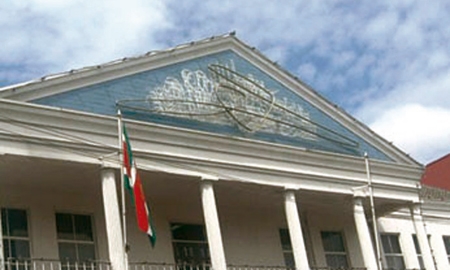Suriname has experienced a decade of sustained economic growth and its momentum looks set to continue into the foreseeable future. It will be the top economic performer in the Caribbean region this year. The United Nations Economic Commission for Latin America and the Caribbean (ECLAC) predicts the Surinamese economy will expand by 4.5% in 2012, compared to the Caribbean average of 1.7%.
Suriname’s economy has grown considerably in the last decade, fueled by an expansion and diversification of its mining industries. The economy is highly dependent on its mining industry, with alumina, gold and oil accounting for 95% of the country’s total exports. Economic growth reached about 7% in 2008, due to large foreign investments in mining and oil sectors. Growth slowed to 3.1% in 2009, as investment briefly waned and the country earned less from its commodity exports as global prices fell. The upturn in world trade and commodity prices helped raise Suriname’s economic growth to 4.0% in 2010 and about 4.5% in 2011.
As a result of stable and growth-oriented policies, Suriname has developed from a low-income country to a upper middle-income country in just the last decade. According to the World Bank the country’s per capita GDP has risen from just US$1,500 in 2001 to around about US$ 6,500 in 2009. At the same time, stability-oriented policies brought inflation down from above 100% in 2000 to an estimated 6.9% in 2010.
“It is a very important achievement to be upgraded by agencies that recognize that there is work happening in the background, and that we are moving in the right direction.” Gilmore Hoefdraad, Governor of the Central Bank |
“The decade since 2000 was the most positive one for Suriname,” says Governor of the Central Bank,
Gillmore Hoefdraad. “The high commodity prices have been a boon for our economy, but, as I always say, luck is of no use without solid macroeconomic policies, and we have had consistently prudent macroeconomic policies over the years. That means conservative fiscal and monetary policies and a very careful and forward-looking management of our resources.”
At the core of the stability-oriented policies is a viable exchange rate and a nearly balanced budget. The Surinamese dollar, which replaced the guilder in 2004, required a devaluation in January 2011, while the government contained expenditure and raised taxes to correct a budget deficit. We consulted with the private sector and the banks and received their full support,” says Mr. Hoefdraad. “The government took to a very careful budgetary policy stance and we limited monetary expansion in the economy to prevent a rise in inflation. This worked very well and stabilized the economy without reducing its growth momentum.” The government’s policy is to also actively manage and reduce the country’s debt, which stands at just around 22% of GDP, an enviably low level by any international standard. It recently came to an agreement to reschedule outstanding payments with the U.S., removing the last irregularity in the debt of Suriname.
As a result of its proactive stability-oriented policies, Suriname was one of the few countries last year that received a positive assessment and outlook from the IMF in its annual report. The IMF underscored the prudence of the economic policies of the government and pointed to a very positive outlook for the years ahead. Suriname received a similar positive assessment from the credit rating agencies. Suriname’s credit rating was upgraded from B to B+ by Fitch in 2011, while Standard & Poor’s raised the country’s rating from B+ to BB, giving Suriname a positive outlook.
According to the Central Bank, the upgrades reflect the country’s stable macroeconomic environment, comparatively strong external credit metrics, structural improvements in the balance of payments, and positive growth outlook.
“Ratings are improved by the confidence of the international community in what you do,” says Mr. Hoefdraad. “It is a very important achievement to be upgraded by agencies that recognize the reform work we are undertaking. Within the Central Bank, and also within the government, there is a major push to improve the level of transparency. If you go to our website, you will find data that had never been published before, as well as access to a wealth of information. We try to inform the public as quickly as we can on major developments.”
In order to stabilize government tax revenue from the mining sector, which is affected by volatile export prices, and to create a lasting and diversified pool of wealth for future generations, the government has put in place a Sovereign Wealth Fund. “We welcomed the President’s speech in which he announced the creation of the Sovereign Wealth Fund,” says Mr. Hoefdraad. “It will provide support for future generations and facilitate growth in areas where it is needed.”

0 COMMENTS